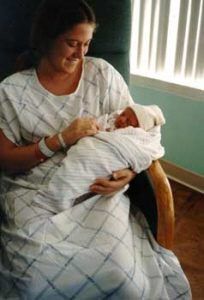Functional Medicine Testing
The Comprehensive Stool Analysis + Parasitology (CSAP) is an invaluable non-invasive diagnostic assessment that permits practitioners to objectively evaluate the status of beneficial and imbalanced commensal bacteria, pathogenic bacteria, yeast/fungus and parasites by culture, PCR, and other gold standard methods.. Precise identification of pathogenic species and susceptibility testing greatly facilitates selection of the most appropriate pharmaceutical or natural treatment agents.
Inflammation can significantly increase intestinal permeability and compromise assimilation of nutrients. The extent of inflammation, whether caused by pathogens or inflammatory bowel disease (IBD), can be assessed and monitored by examination of the levels of biomarkers such as calprotectin, lactoferrin, and lysozyme via this stool test. These markers can be used to differentiate between inflammation associated with potentially life-threatening inflammatory bowel disease (IBD), which requires lifelong treatment, and less severe inflammation that can be associated with irritable bowel syndrome (IBS) which is frequently due to the presence of enteroinvasive pathogens. Calprotectin and lactoferrin are only markedly elevated prior to and during the active phases of IBD, but not with IBS. Monitoring these levels in patients with IBD can therefore facilitate timely treatment of IBD, and can be ordered separately. Since the vast majority of secretory IgA (sIgA) is normally present in the GI tract, where it prevents binding of pathogens and antigens to the mucosal membrane, it is essential to know the status of sIgA in the gut. sIgA is the only bona fide marker of humoral immune status in the GI tract.
Cornerstones of good health include proper digestion of food, assimilation of nutrients, exclusion of pathogens and timely elimination of waste. To obtain benefits from food that is consumed, nutrients must be appropriately digested and then efficiently absorbed into portal circulation. Microbes, larger-sized particles of fiber, and undigested foodstuffs should remain within the intestinal lumen. Poor digestion and malabsorption of vital nutrients can contribute to degenerative diseases, compromised immune status and nutritional deficiencies. Impairment of the highly specific nutrient uptake processes, or compromised GI barrier function, as in “leaky gut syndrome,” can result from a number of causes including:
- Low gastric acid production
- Chronic Maldigestion
- Food allergen impact on bowel absorptive surfaces
- Bacterial overgrowth or imbalances (dysbiosis)
- Pathogenic bacteria, yeast or parasites and related toxic irritants
- The use of NSAIDs and antibiotics
Impairment of intestinal functions can contribute to the development of food allergies, systemic illnesses, autoimmune disease, and toxic overload from substances that are usually kept in the confines of the bowel for elimination. After performing a stool test, efficient remediation of GI dysfunctions incorporates a comprehensive guided approach that should include consideration of elimination of pathogens and exposure to irritants, supplementation of hydrochloric acid, pancreatic enzymes and pre- and probiotics, and repair of the mucosal barrier.
The Organic Acids Test (OAT) offers a comprehensive metabolic snapshot of a patient’s overall health with over 70 markers. It provides an accurate evaluation of intestinal yeast and bacteria. Abnormally high levels of these microorganisms can cause or worsen behavior disorders, hyperactivity, movement disorders, fatigue and immune function. Many people with chronic illnesses and neurological disorders often excrete several abnormal organic acids in their urine. The cause of these high levels could include oral antibiotic use, high sugar diets, immune deficiencies, acquired infections, as well as genetic factors.
Our Organic Acids Test also includes markers for vitamin and mineral levels, oxidative stress, neurotransmitter levels and oxalates, which are highly correlated with many chronic illnesses.
If abnormalities are detected using the OAT, treatments can include supplements, such as vitamins and antioxidants, or dietary modification. Upon treatment, patients and practitioners have reported significant improvement such as decreased fatigue, regular bowel function, increased energy and alertness, increased concentration, improved verbal skills, less hyperactivity, and decreased abdominal pain. The OAT is strongly recommended as the initial screening test.
HOW THE L.I.F.E. BIOFEEDBACK SYSTEM WORKS
L.I.F.E. System – Technical Information
The measurement made by the L.I.F.E. System is based upon the relationship between “action & reaction” by applying a challenge to the patient (“action”) and measuring the reaction of the human body as it answers the challenge (“reaction”).
The basic principle of the mode of action of the L.I.F.E. System device is the following: The L.I.F.E. System device sends a square wave signal with amplitude of 5 Volt, and a duty cycle of 50% to the harness. The frequency to be applied, for determination of our test, is about 47.3 kHz. The measurement current through the body is limited to a maximum of 10mA, but usually no more than 5mA or less.
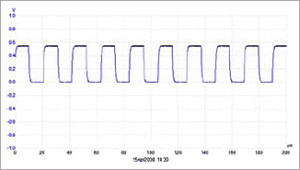
Figure 1 shows the applied signal, without the harness being in contact with the human body.
Figure 1: Square wave signal with no harness in contact with the human body
When the harness is in contact with the human body, a significant change (deformation) of the signal can be detected. Figure 2 shows the respective signals (but on a different time scale to underline the changes)
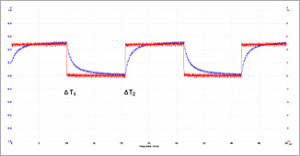
Figure 2: Superimposition of the signal without harness being applied to the human body (red signal) and with electrodes being applied to the human body (blue signal).
As can be seen from the superimposition of the signals, there is a significant difference in the shapes of the signals. The detection of the signal is realized by the L.I.F.E. System device in a binary way – the part of the signal being placed in the upper half of the square wave signal is detected, the lower part of the square wave signal is ignored. Therefore, the different shapes of the signals (electrodes applied to a patient and no electrodes applied to the patient) result in time differences ΔT1 and ΔT2 before half of the amplitude is passed. These time differences resulting from the different shapes of the signals are detected by the L.I.F.E. System device.
When applying the same methodology to a patient suffering from a particular imbalance, again a signal will be detected. But as the situation in the body of the patient is different due to the imbalance, the shape of the signal to be detected is different, and it can be seen that this signal is less steep in the case of imbalance. This difference in signal shapes results in other time differences Δt1 and Δt2, which are characteristic for a particular imbalance.
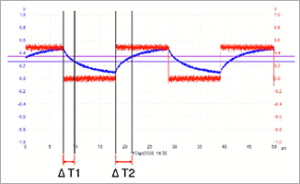
Figure 3 shows the signal obtained in the case of such an imbalance
Figure 3: Superimpositining of the Signal obtained from a patient suffering from a particular imbalance (blue signal) and the signal obtained when harness is not applied to the human body (red signal)
However, it must be pointed out that the results obtained by the L.I.F.E. System device can only give hints to physical states in which the presence of a particular imbalance is likely. The final diagnosis must be confirmed by other methodologies such as X-ray or MRI in any case.
The basic principle of the L.I.F.E. System device is to measure these time differences of the respective signals and to achieve a statistical evaluation based on a mathematical algorithm. The results obtained are compared with data which are archived in a data base.
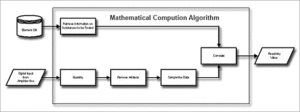
Figure 4: Basic work flow for the evaluation of data obtained
The mathematical calculation algorithm takes input information on the one hand, which is stored in the Element database, and on the other hand the digitized measurement data, belonging to the element. After quantifying the values, artefacts (like disturbances caused by EMC, movements, etc.) are removed. The cleaned data is sampled and after that, the correlation is calculated, leading to the desired reactivity value, providing the results of reactivity testing, relative to the given element.
It can be claimed that when the situation inside the human body is disturbed due to a particular imbalance, the physical situation will become different. Any abnormal condition can be considered as a kind of imbalance, it can be easily seen that the temperature inside the area of interest is different. As a consequence, the shape of the signal that is detected will differ from the one measured in a non-conditional situation. The differences can be measured easily by detecting the time difference, as described above, and those time differences are characteristic for the respective situations. Evidence that they can be measured and detected was given by the outcome of the clinical investigation.
- Literature describing the effectiveness of the L.I.F.E. System device
Literature in peer reviewed journals describing the mode of action and effectiveness of the L.I.F.E. System was not available prior to the development of the L.I.F.E. System. Consequently, a clinical investigation giving evidence to the effectiveness was undertaken in 2006. The complete documentation and the results have already been submitted to and approved for European Class 2-A Certification.
What is a Tissue Mineral Analysis?
- A test that measures the mineral content of your hair.
- Mineral content of the hair reflects the mineral content of the body’s tissues.
- If a mineral deficiency or excess exists in the hair, it usually indicates a mineral deficiency or excess within the body, or bio-unavailability.
- Hair analysis allows a correct program of diet and supplementation to be designed for each individual’s specific needs.
Why Test for Minerals?
- Minerals are involved in almost all enzyme reactions within the body.
- Abnormal changes in body chemistry and nutritional deficiencies may result in early, subtle change in the body.
- For example, white spots in the fingernails may indicate a possible ZINC DEFICIENCY.
- Longitudinal ridging in the nails may indicate a possible IRON DEFICIENCY.
- Brittle hair and nails may indicates a possible CALCIUM and COPPER imbalance.
- Deep grooves across the nails indicates a possible CALCIUM DEFICIENCY.
- Stretch marks – possible ZINC DEFICIENCY.
- Lack of growth – possible ZINC DEFICIENCY.
- Mood swings – possible TOXIC METAL accumulation such as LEAD, MERCURY, or CADMIUM.
Conditions which may Result or be Aggravated by Mineral Imbalance Are:
- Depression
- Hair Loss
- Musculo-Skeletal Disorders
- Headaches
- Anemia
- Cardiovascular Disease
- Hypoglycemia
- Thyroid Disturbances
- Skin Rashes
- Hyperactivity
- Prostate
- Emotional Problems
- Hypertension
- Digestive
- Allergies
- Arthritis
- Diabetes
Common Causes of Mineral Imbalance
- Improper diet, such as excessive intake of refined carbohydrates and sugars, strict vegetarian diets or other exclusive diets.
- Taking vitamins and minerals which are not compatible with your current body chemistry.
- Medications
- Birth Control Pills
- Stress
- Accumulation of toxic metals from the environment, job or hobby.
- Inheritance of mineral patterns from parents.
Cranial Sacral Therapy (CST) is a light touch healing practice that balances the cranial sacral system in the body. This system includes the bones, nerves, fluids and connective tissue of the skull, the spine, the sacrum and ultimately all tissues of the body.
A cranial sacral therapist works with the cranial sacral system by gently working the spine, the skull and its cranial sutures, diaphragms of the body, and the fascia of the body, (connective tissue). CST eases the restrictions in nerve passages. Flow of cerebral spinal fluid through the spinal cord can thus be optimized, allowing for misaligned bones to be restored to their proper position more easily.
Myofascial Unwinding
Myo means muscle, and fascial means connective tissue. Connective tissue is a 3 dimensional network of densely woven, tough tissue that surrounds every organ, muscle, nerve, bone and vessel in the entire body..
This fascial network is one continuous layer from your head to your toes. In this way you can begin to see that each part of the entire body is connected to every other part by the fascia.
In a normal healthy state the body maintains equalibrium through a delicate balance of tension and elasticity. With the proper amount of tension it helps support the efficient alignment of your bones while being elastic enough to permit full, unrestricted movement. However in response to physical trauma, stress, chemicals, or habitual poor posture, it can begin losing its pliability. Once these restrictions start exerting abnormal pressure on bones, joints, nerves, blood vessels and even organs, they unbalance the system, creating pain both locally and in seemingly unrelated areas of your body.
In order to correct myofascial restrictions, sustained, low intensity pressure is applied to a given area and the fascia slowly lengthens and eventually remains that way. Myofascial unwinding is a spontaneous movement of the body by the way of the mind. When the practitioner initiates an unwinding process by either compressing or distracting a certain area, the body will be inclined to move as it is needed to restore balance to the myofascial system.
While myofascial unwinding is gentle, it has profound effects upon the body. While each patient’s response will be highly individualized, certain common responses are seen repeatedly. Occasionally you may leave a treatment feeling like nothing happened. Later, even a day later, the effects of the treatment may occur. There may be soreness after treatment for several hours or perhaps a day. The soreness is the response of the tissues secreting lactic acid and other trapped metabolic wastes into the intercellular spaces where it can be excreted by the body’s normal pathways. The best way to aid in this process is by drinking extra water and taking an Epson salt bath which aids in flushing toxins out of the body.
Generally acute cases are typically resolved with a few treatments. The more chronic the problem , the longer it usually takes to bring lasting results.

How CST saved my son
“At 18 months old, my mild-mannered baby started to throw horrid tantrums. He screamed. He cried. He slammed his head into everything from walls to floors. It was heart-breaking as I geared up for what everyone called the “Terrible Twos.” But as time went on it got worse. My son started grinding his teeth, whether he was awake or asleep. Eventually he even preferred sleeping on the floor instead of in his own bed.
I researched everything I could find, from parenting styles to plagiocephaly to autism. I felt in my spirit there was more going on here than just a 2-year-old thing. But what?
Then the summer that my son turned 3, a nurse I was talking to on the phone overheard him in the background. When she asked about him I explained that everyone told me he would grow out of it. But I also told her I had my suspicions that he had some kind of head pain. She concurred and suggested I try Tylenol to see if he’d calm down. It worked!
We needed to address the head pain he was experiencing. Fortunately, I’d already researched Cranial Sacral Therapy (CST). My nephew had been treated for torticollis using CST with remarkable success.
The results were dramatic:
~ One appointment and my son stopped sleeping on the floor. He also seemed to have an attitude change.
~ Two appointments and he stopped grinding his teeth.
~ Three appointments and I’ve yet to see him slam his head like he used to.
~ Four appointments and everything is moving as it should, from his skull to his spine.
We continued with 13 appointments before moving to a new state. Within 6 weeks, he was asking to go back to the “massage doctor”.
Now he is 7 years old, he’s been diagnosed with PDD-NOS (autism) and wears glasses. We see Dr. Bahr on a regular basis and CST relieves headaches caused by his glasses and the plagiocephaly.
I’m in awe over the changes that I’ve seen in my son after CST and recommend Dr. Bahr to any concerned mom.”
Sincerely,
Charalet Dunnigan 12/09
Chiropractic care is a conservative, non-invasive treatment used to relieve pain and treat underlying conditions of the neuromuscular system. Although it is highly effective on its own, the therapy works synergistically with massage therapy to deliver faster, more effective results. Massage prior to a chiropractic treatment helps loosen stiff muscles and make them more susceptible to manual adjustments. Many chiropractors not only recommend massage to patients – they offer it right in their offices.

Did you know…that massage therapy has been used for thousands of years to relieve muscle stiffness and back pain related to stress and injury? Today, it is used around the world for those same reasons. In fact, there are more than 100 types of massage used in countries all around the world. Each offers its own benefits, but nearly all serve the same purposes – to relieve stress, improve range of motion, release built-up muscle toxins, and provide relief of pain and muscle stiffness. |
Frequently Asked Questions
Should I get a massage?
Not everyone is a candidate for massage, so see your primary care physician before getting treatment. According to the National Institute for Complimentary and Alternative Medicine, massage administered by a trained and licensed professional carries very low risk of complications.
What should I expect during my massage?
Your massage experience will depend primarily on the type of massage you get. If you see a professional masseuse, you can elect traditional massage for superficial muscle relaxation or deep tissue massage to target the muscles deep beneath the skin. Massages are usually available for durations of up to 90 minutes, although you can reap the benefits of massage in just 30 minutes or less.
Will I need to follow any special instructions following my massage?
Yes. Massage therapy helps loosen muscles by relieving toxins that are stored in them. These toxins need to be flushed out of your system in the hours following your massage, so it is recommended that you drink plenty of water once you complete your treatment.
Chiropractic care for children offers your family a solid foundation for wellness.
Throughout pregnancy, birth, and childhood, the chiropractic lifestyle offers choices and benefits for your greater health and well-being.
New Study Shows: Chiropractic Care for Children is Safe and Effective
Would you like to learn more?
www.discoverkidshealth.com
International Chiropractic
Pediatric Association
Pregnancy and Birth as a Natural Process
With Chiropractic Care supporting this Process
Chiropractors work with the body’s ability to adapt and function the way it is designed to. Chiropractic care and pregnancy is vital to the normal physiological function of both mother and baby in pregnancy and birth.
In The Mother
- Restoring balance to the mother’s pelvis during pregnancy can lead to easier deliveries for you and baby, as ell as possibly reducing labor time.
- Can remove tension on the ligaments that support the uterus thus reducing torsion (intrauterine constraint) to the womans uterus.
- Reduces interference to the mother’s vital nervous system which controls and coordinates all of her systems and functions.
- Chiropractic care during pregnancy can relieve and even prevent discomforts experienced in pregnancy.
To The infant
- Can offer the baby room to move into the best possible position for birth.
- Studies in infants show symptoms of colic, ear infections, and asthma can be reduced with chiropractic care.
- Chiropractors with additional training in pediatrics use very specific, gentle techniques to care for children. On the very young, the chiropractic adjustment is as light as a finger touch.
Millions of auto accidents occur every year. Though there is no way of knowing how many total collisions occur, the National Highway Traffic Safety Administration reported that more than 9.7 million vehicles were involved in police-reported accidents during 2012 alone. Though most collisions are non-fatal, even the slightest fender benders can cause injury. One of the most important steps you can take after an accident is visiting your chiropractor for complete evaluation. Even the slightest fender-benders can cause subluxations and underlying injury that may progress to pain and other complications if not treated right away.
If you found yourself in a crash, would you know what to do in the moments immediately after impact? The first step is to remain calm and assess the situation around you. If possible, exit your vehicle to a safe location away from the road. If you or someone else involved in the collision is injured, call 9-1-1; otherwise, call the police. If your vehicle is not drivable, you may need to call a wrecker service to remove it from the roadway. If the collision was severe, you may need to visit a local hospital for medical evaluation and to ensure you have not suffered any life-threatening injuries. Then, contact your lawyer and insurance company to begin working through the legalities and financial circumstances surrounding the accident.
Frequently Asked Questions
I am not hurting. Why should I visit a chiropractor after an auto accident?
Not all injuries cause pain, soreness or muscle stiffness – at least not right away. Often it can take many days, weeks or even months for symptoms to appear, which may worsen over time. Auto accident injuries are easier to treat when they are new before scar tissue has a chance to develop. Chiropractors can pinpoint underlying injuries in an accident patient and begin treatment to prevent future complications.
What types of symptoms might indicate an injury after a collision?
Though not all injuries are symptomatic right away, many do cause obvious symptoms in the hours and days after an accident. Signs of a possible injury include:
- Muscle stiffness
- Neck Pain
- Back Pain
- Reduced Range of Motion
- Arm, Shoulder or Knee Pain
- Dizziness
- Vision Changes
How can a chiropractor treat auto accident injuries?
Chiropractors utilize various non-invasive techniques to realign the spine and joints into their ideal position. Over time, treatments can eliminate pain, reduce inflammation and empower the body to heal itself. Chiropractic focuses on treating the source of pain, rather than just the symptoms. Many patients who seek chiropractic help are able to spare themselves years of future pain and limitation simply by getting treatment for auto accident injuries as early as possible.
Injuries in the workplace are a common occurrence. When a person gets hurt on the job, the employer loses a worker and the worker is forced to take time off to recover. Worker’s comp insurance typically covers injuries incurred on the job, not only replacing lost wages but also paying for medical bills associated with the recovery process. If you have just suffered a workplace injury, be sure to file a claim with your employer right away and seek chiropractic treatment as soon as possible.
Did you know…that the workplace is one of the most common places that people get injured? According to the Bureau of Labor Statistics, nearly 3 million people were injured on the job in 2012. That is the equivalent of approximately 3.4 cases of workplace injury for every 100 people in the full-time work force. People who work in manufacturing and service provider industries are especially susceptible to injury in the workplace though anyone in any occupation can become injured on the job. |
Frequently Asked Questions
What types of workers comp injuries will a chiropractor treat?
Most workplace injuries are related to the musculoskeletal system. Strains and sprains are by far the most common injuries – often caused by heavy lifting. Back pain and back injuries specifically are the most frequent cause of missed work and work injury-related medical expenses, far surpassing all other injuries.
Why should I see a chiropractor right away for a workplace injury?
Chiropractors treat the source of pain rather than the symptoms of an injury. Chiropractic treatment can resolve injuries quickly, returning workers to their jobs with minimal time off work and medical cost. Chiropractic adjustments manipulate the spine into a normal alignment, helping to treat bulging discs, pulled muscles and conditions like sciatica.
How can I prevent workplace injuries in the future?
Workers comp injuries are often caused by overexertion, heavy lifting, unusual posture and repetitive stress. Injuries may occur suddenly or develop slowly over time. Symptoms often include pain, numbness and tingling. Employees may be able to prevent workplace injuries by continuing to visit a chiropractor for periodic adjustments and by utilizing preventive measures, such as wearing supportive braces at work or taking frequent breaks from a heavy physical workload.
If you have suffered a workplace injury or are otherwise interested in preventing future workers comp injuries, contact our office to schedule a consultation.
Athletes are constantly pushing themselves to the limits, putting pressure and strain on their bodies to perform. The feet are especially stressed, bearing as much as 20 times a person’s body weight or more during some activities. Though proper training, footwear and other precautions can help protect the feet during play, countless athletes suffer foot and ankle injuries every year. A sports related foot injury requires proper treatment and plenty of healing time to increase the chances of a full recovery.
Did you know…that approximately 1 in 4 sports injuries is foot and ankle-related? In fact, foot and ankle injuries are responsible for 35 percent of all time lost to injuries in sports that require running or jumping. Though nearly all athletes are susceptible to foot and ankle injuries, those who participate in sports that require the feet as points of contact are most likely to develop sprains, tendonitis and other foot-related conditions. Examples include football, basketball, dance, soccer, cheerleading and track and field events. |
Frequently Asked Questions
What are the symptoms of a sports related foot injury?
Sports-related foot and ankle injuries are most commonly caused by overuse, improper warm-ups, playing on a hard surface, or accidents during play. The symptoms will vary depending on the type of injury but may include pain, swelling, bruising and difficulty moving or putting pressure on the affected foot. Some injuries may cause numbness and tingling in the feet, and some injuries may cause a visible displacement of the joints or bones.
Why should I see a podiatrist for a sports related foot injury?
No one is more qualified to treat foot and ankle trauma than a podiatrist. Your podiatrist has a thorough understanding of the foot’s anatomy and kinesiology. Your doctor will use diagnostic imaging to help confirm the source of trauma in your foot and develop a plan for treatment. Failure to receive necessary treatment could affect the long-term outcome of an injury, potentially worsening inflammation and damage to joints, bones and soft tissues of the foot and ankle.
What types of treatments are available for sports-related foot injuries?
Treatment for athletic foot injuries is often non-invasive, requiring rest, ice, compression and elevation of the injury. However, some injuries are more severe and require greater interventions. Your podiatrist may recommend immobilization to prevent further injury and medication to help reduce inflammation. Rarely, a sports-related foot injury may require surgery. Keep in mind that it may take several weeks for an injury to heal, during which time you may need to refrain from athletic training or otherwise adopt a modified exercise schedule. Physical therapy may help you regain flexibility and restore strength to an injured foot or ankle.
Sports and athletics play an important role in the lives of many people here. Not only are sports a fun pastime, but the regular activity keeps bodies healthy and strong. Unfortunately, there are risks associated with nearly every athletic activity, from running and swimming to swinging a golf club or tennis racket. The goal of our sports orthopedics services is to help our patients recover from sports-related injuries and enjoy safe sports participation in the future. By identifying and treating injuries as quickly as possible, we can make medical interventions and develop a rehabilitative plan for recovery.
Did you know…that sports orthopedists are capable of treating a wide range of athletic injuries? |
Examples include:
- Rotator cuff injuries
- Tendinitis
- Frozen shoulder
- Bursitis
- Fractures
- Torn ligaments
- Dislocation
- Sprains and strains
- Torn cartilage
- ACL injuries
- Knee and elbow hyperextension
- Ankle injuries
- And much more!
Frequently Asked Questions
Could I benefit from a sports orthopedics consultation?
Many athletes take advantage of sports orthopedics to treat injuries and traumas caused by physical activity. If you participate in sports, go to the gym, or enjoy any type of athletic activity, sports orthopedics may help alleviate the symptoms caused by repetitive motion, overuse, or some other type of trauma.
What should I expect during my first visit?
Your initial visit will provide your doctor with an understanding of your physical and athletic history. During this visit, you will explain any pain, stiffness or swelling you may have been experiencing. Based on the results of your initial examination, your doctor may request further tests, such as x-rays or MRI imaging, to make a diagnosis and develop a personalized treatment plan.
What can I do to prevent my condition from worsening or returning?
There are many things you can do to prevent an injury from worsening. Your doctor will make recommendations for any lifestyle changes that may benefit your orthopedic health. Often, a regimen of exercise and stretching can help prevent soft tissue damage, and working with a trainer can prevent overuse injuries. In some cases, patients may need to avoid some activities altogether to protect previously injured joints, bones, and tissues.



